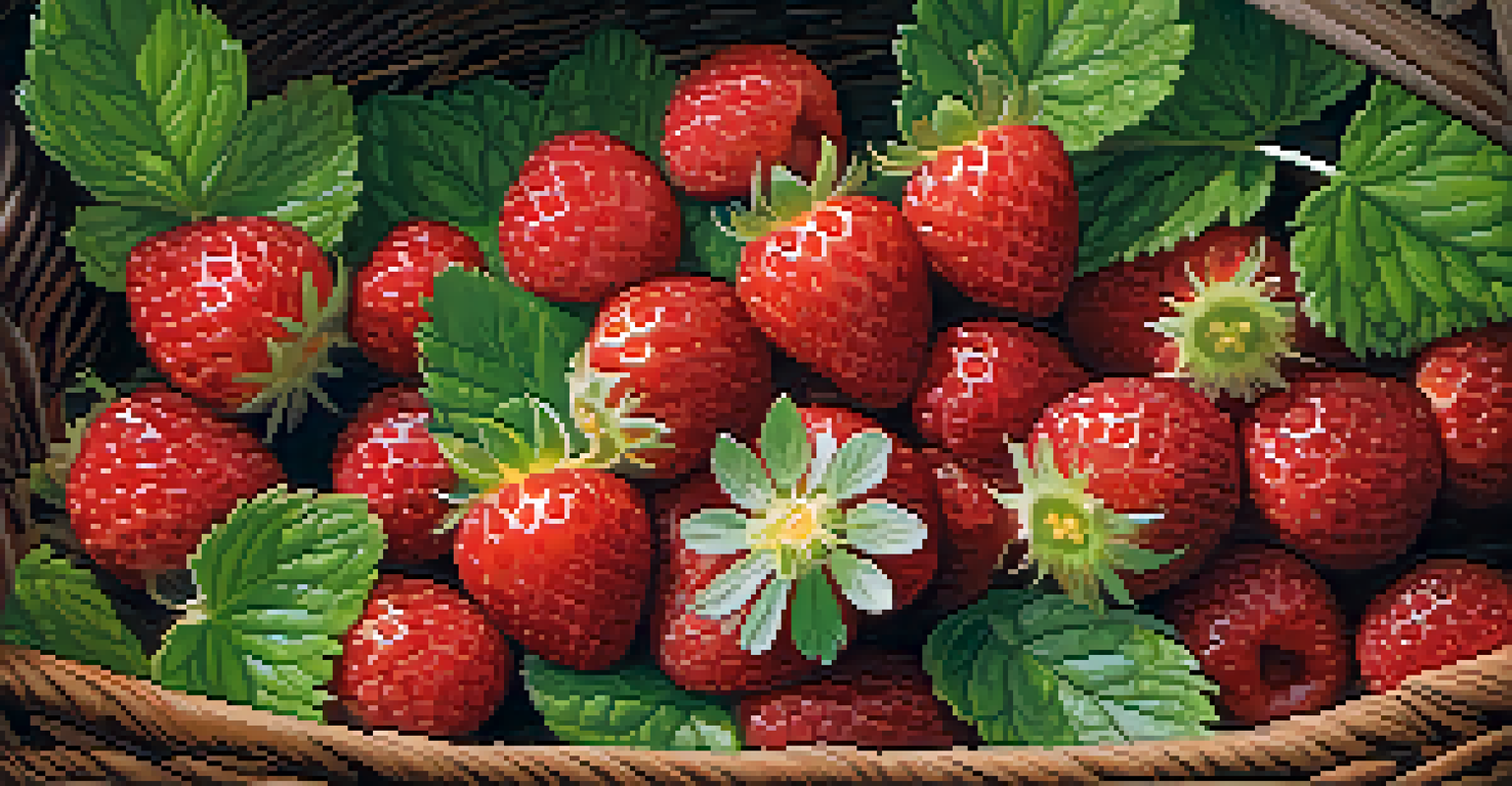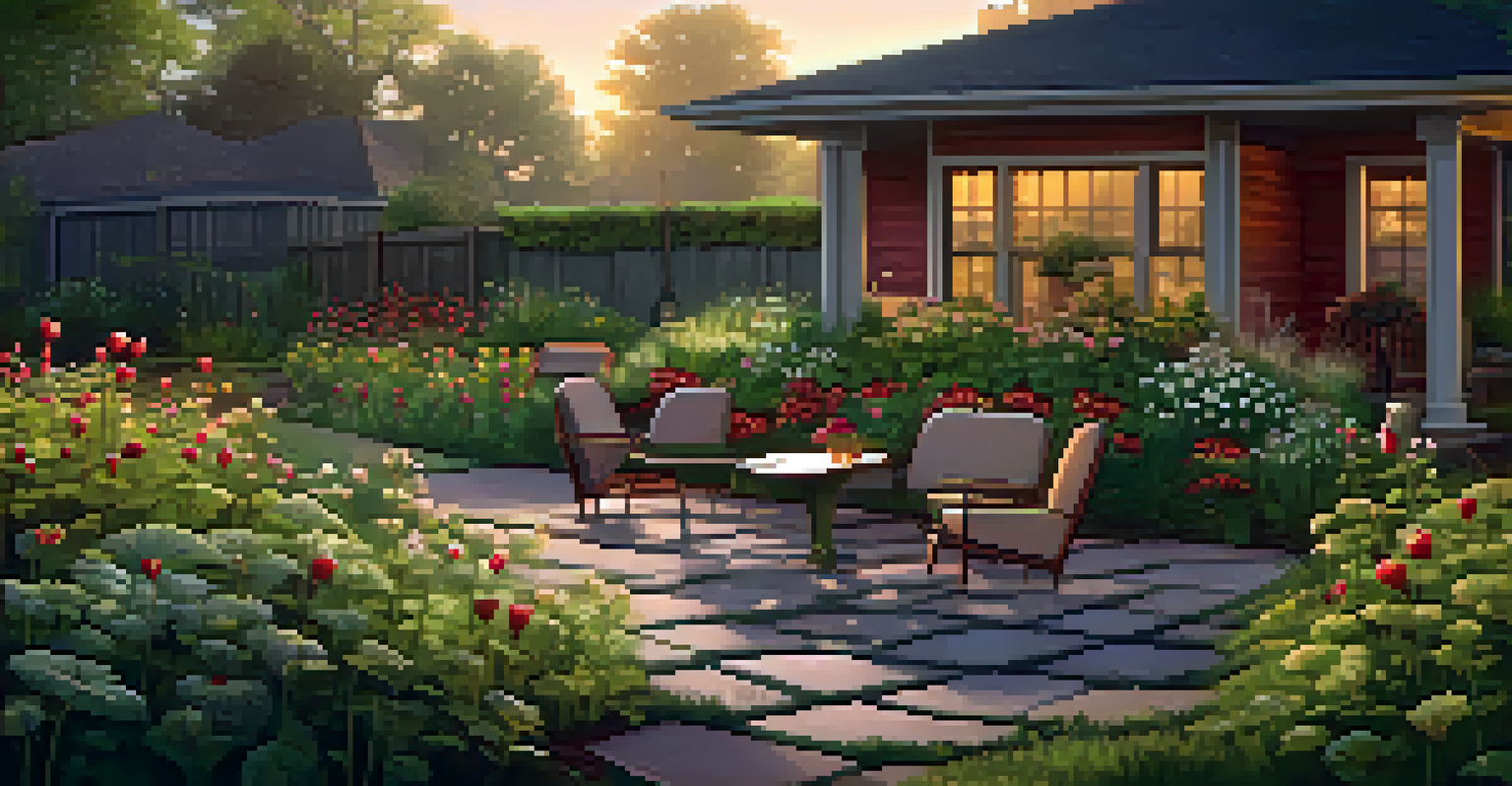Incorporating Edible Native Plants in Your Landscape Design

Understanding Edible Native Plants and Their Benefits
Edible native plants are species that thrive in your local environment and offer delicious, nutritious options. These plants are adapted to the local climate and soil conditions, making them easier to grow and maintain. By incorporating them into your landscape design, you not only create a beautiful setting but also support local wildlife and biodiversity.
The greatest threat to our planet is the belief that someone else will save it.
One of the significant benefits of edible native plants is their low impact on the environment. They require fewer resources, such as water and fertilizers, compared to non-native species. This makes them an eco-friendly choice for sustainable gardening, helping you reduce your carbon footprint while enjoying fresh produce.
Additionally, edible native plants can enhance the aesthetic appeal of your garden. With a variety of colors, textures, and shapes, they can bring vibrancy to your landscape while providing food for you and your family. Imagine plucking a juicy berry or a crisp vegetable right from your backyard while enjoying the beauty of nature.
Choosing the Right Edible Native Plants for Your Area
Selecting the right edible native plants starts with understanding your local ecosystem. Research which species are native to your region and thrive in your specific climate zone. Local gardening centers or extension services can provide valuable resources and advice on the best plants for your area.

Consider your landscape's sunlight and soil conditions when choosing plants. Some species thrive in full sun, while others prefer partial shade or wet soils. By matching plants to their ideal growing conditions, you increase the chances of a successful harvest and a flourishing garden.
Benefits of Edible Native Plants
Edible native plants are environmentally friendly, requiring fewer resources while providing nutritious food and supporting local biodiversity.
Also, think about the flavors and uses of the plants you choose. For instance, wild blueberries are not only delicious but also attract pollinators, while native herbs like mountain mint can enhance your culinary creations. By diversifying your selection, you can enjoy a variety of tastes and benefits.
Designing Your Landscape with Edible Native Plants
When designing your landscape, aim for a harmonious blend of aesthetics and functionality. Start by mapping out your garden space, considering factors like sun exposure and existing plants. This will help you create a layout that incorporates edible native plants alongside ornamental species, enriching both beauty and biodiversity.
Gardening adds years to your life and life to your years.
You might want to group plants with similar water needs together, creating micro-climates that support their growth. For instance, placing a patch of wild strawberries near a rain garden can enhance moisture retention while providing a delightful snack. This thoughtful design approach maximizes the benefits of your edible landscape.
Don’t forget to include pathways and seating areas in your design. These features invite you to enjoy the garden more fully and provide easy access to your harvest. With a little creativity, you can create a space that’s not only functional but also a joy to spend time in.
Maintaining Your Edible Native Plants
Once you’ve planted your edible native plants, maintenance is key to their success. Regular watering, especially during dry spells, will help establish young plants. However, many native plants are drought-tolerant once established, so you won’t need to water them as frequently in the long run.
Mulching around your plants can help retain moisture and suppress weeds, making maintenance easier. Organic mulch materials, such as wood chips or straw, not only improve soil quality over time but also create a visually appealing layer in your garden. This simple step can significantly reduce the workload in your garden.
Designing with Purpose
Creating a landscape that blends aesthetics and functionality enhances both the beauty of your garden and the productivity of your edible plants.
Lastly, keep an eye out for pests and diseases. Native plants are generally more resistant to local pests, but monitoring your plants regularly can help you catch any issues early. A simple spray of soap and water can often do the trick, allowing you to maintain your garden with minimal chemical intervention.
Harvesting and Enjoying Your Edible Native Plants
The real joy of incorporating edible native plants lies in the harvesting process. When the time is right, whether it’s plump berries or crisp greens, you can enjoy the fruits of your labor. Harvesting not only provides fresh produce but also encourages you to connect with your garden and appreciate its beauty.
Get creative in the kitchen with your harvest! Native plants can be used in various recipes, from salads to jams, bringing unique flavors to your meals. For instance, you can make a refreshing salad with fresh greens and edible flowers, or create a sweet treat using native fruits.
Inviting friends and family to share in the harvesting experience can make it even more enjoyable. Organize a gathering where everyone can pick their favorite native edibles and share recipes. This way, you not only relish the bounty of your garden but also create lasting memories with loved ones.
Creating a Wildlife-Friendly Edible Landscape
Incorporating edible native plants into your landscape design can also create a haven for local wildlife. Many native plants provide essential food and habitat for birds, bees, and butterflies, which are crucial for pollination. By designing your garden with wildlife in mind, you contribute to the health of your local ecosystem.
Consider including a mix of flowering plants and fruit-bearing shrubs to attract a diverse range of species. For example, planting native wildflowers alongside berry bushes can create a vibrant environment that invites pollinators while offering a tasty harvest. This thoughtful combination can enhance both the beauty and productivity of your garden.
Engaging with Wildlife
Incorporating native plants fosters a wildlife-friendly environment, attracting essential pollinators and promoting a balanced ecosystem.
Additionally, avoid using harmful pesticides that can threaten local wildlife. Instead, embrace organic gardening practices that promote a healthy ecosystem. This not only benefits the plants but also supports the creatures that inhabit your garden, creating a thriving environment for all.
Resources for Further Learning about Edible Native Plants
Expanding your knowledge about edible native plants is essential for successful incorporation into your landscape. Numerous resources are available, including local gardening clubs, botanical gardens, and community workshops. These platforms can provide valuable insights and connect you with fellow gardening enthusiasts.
Books and online forums also offer a wealth of information on specific native plants, their uses, and care techniques. Websites dedicated to native gardening often feature plant databases and articles that can guide your choices. Don’t hesitate to explore these resources for inspiration and tips.

Lastly, consider reaching out to local experts or extension services for personalized advice. They can help you tailor your landscape design to your specific area, ensuring you select the best edible native plants for your garden. With the right knowledge and resources, you’ll be well on your way to creating a thriving edible landscape.